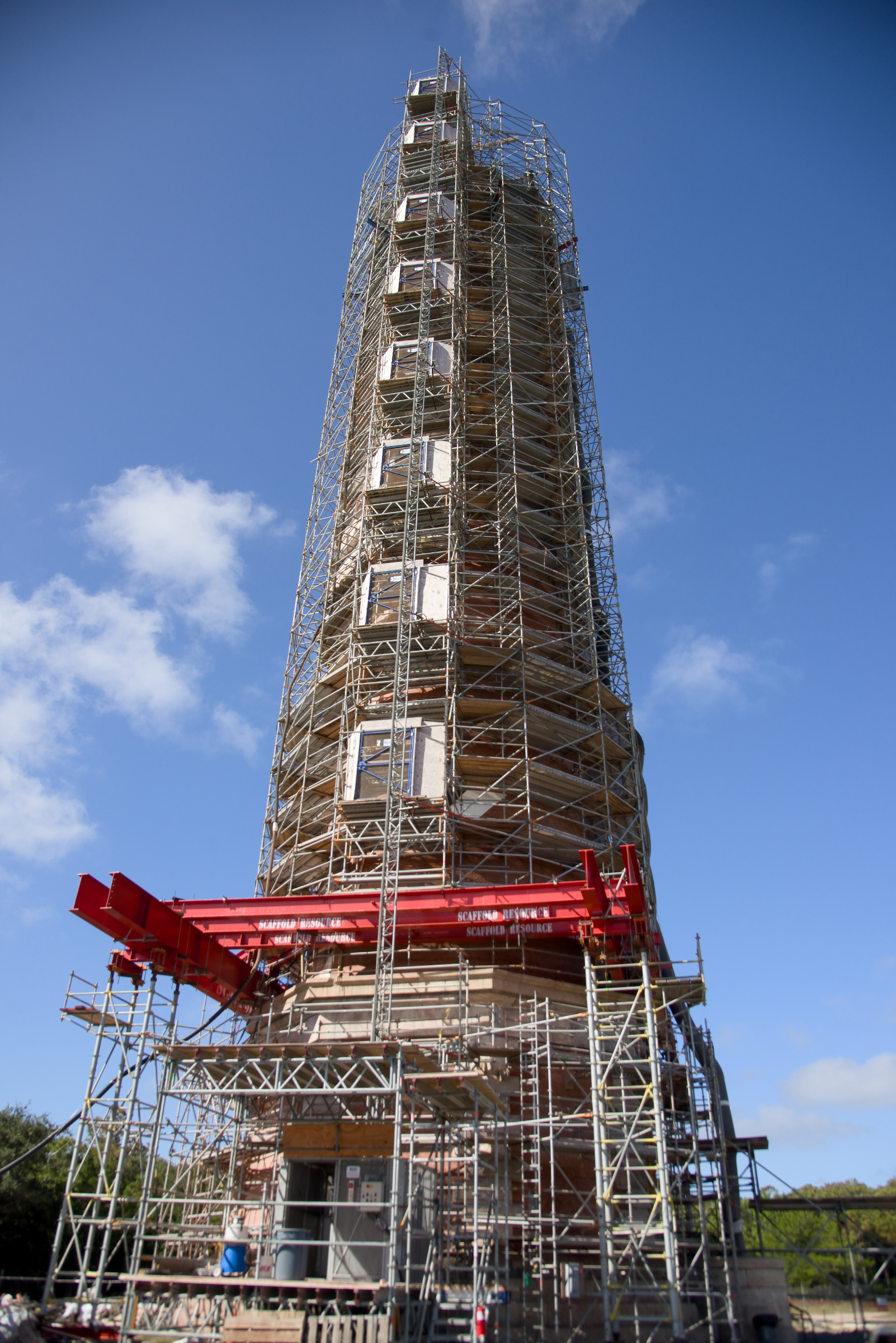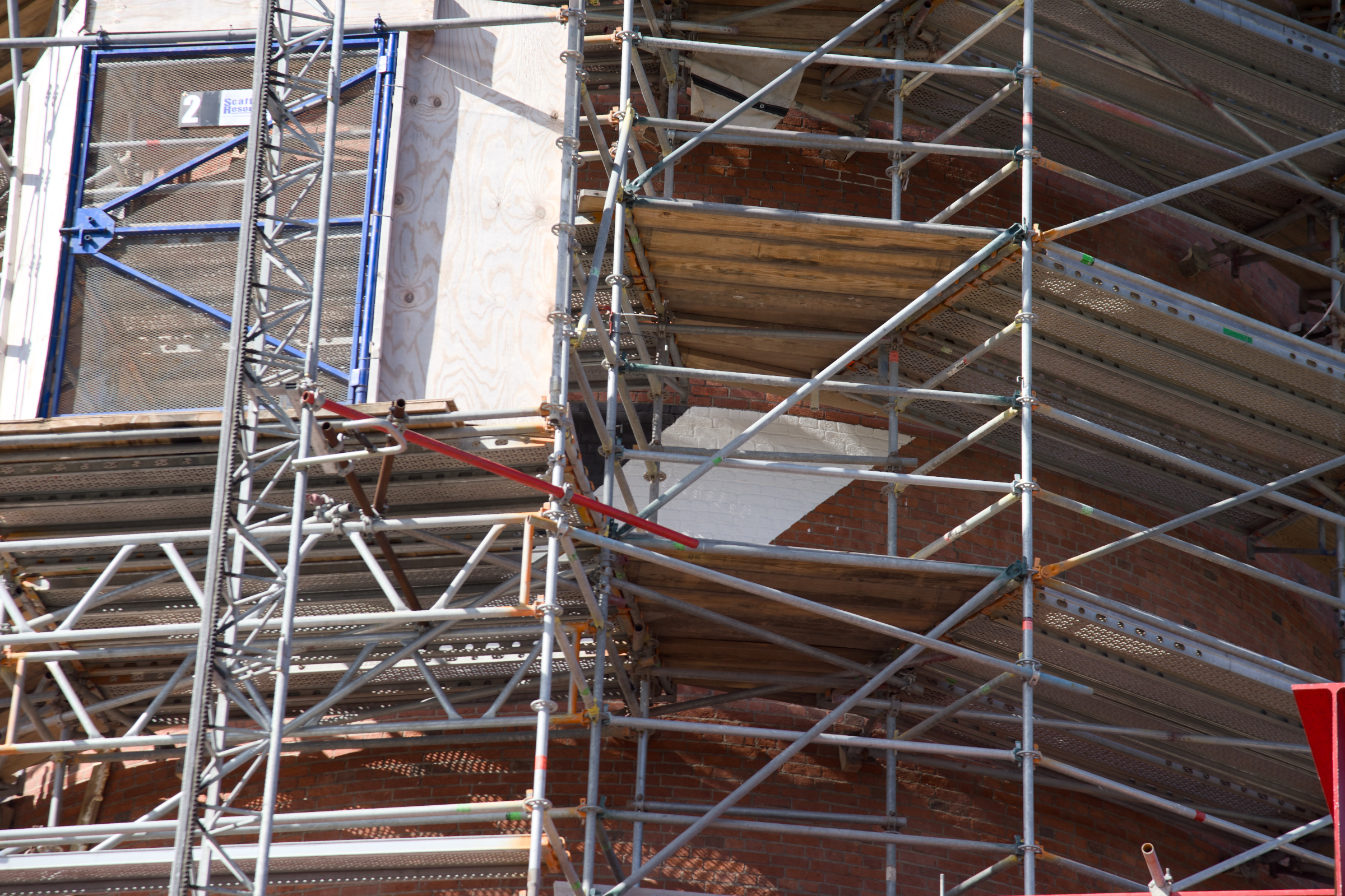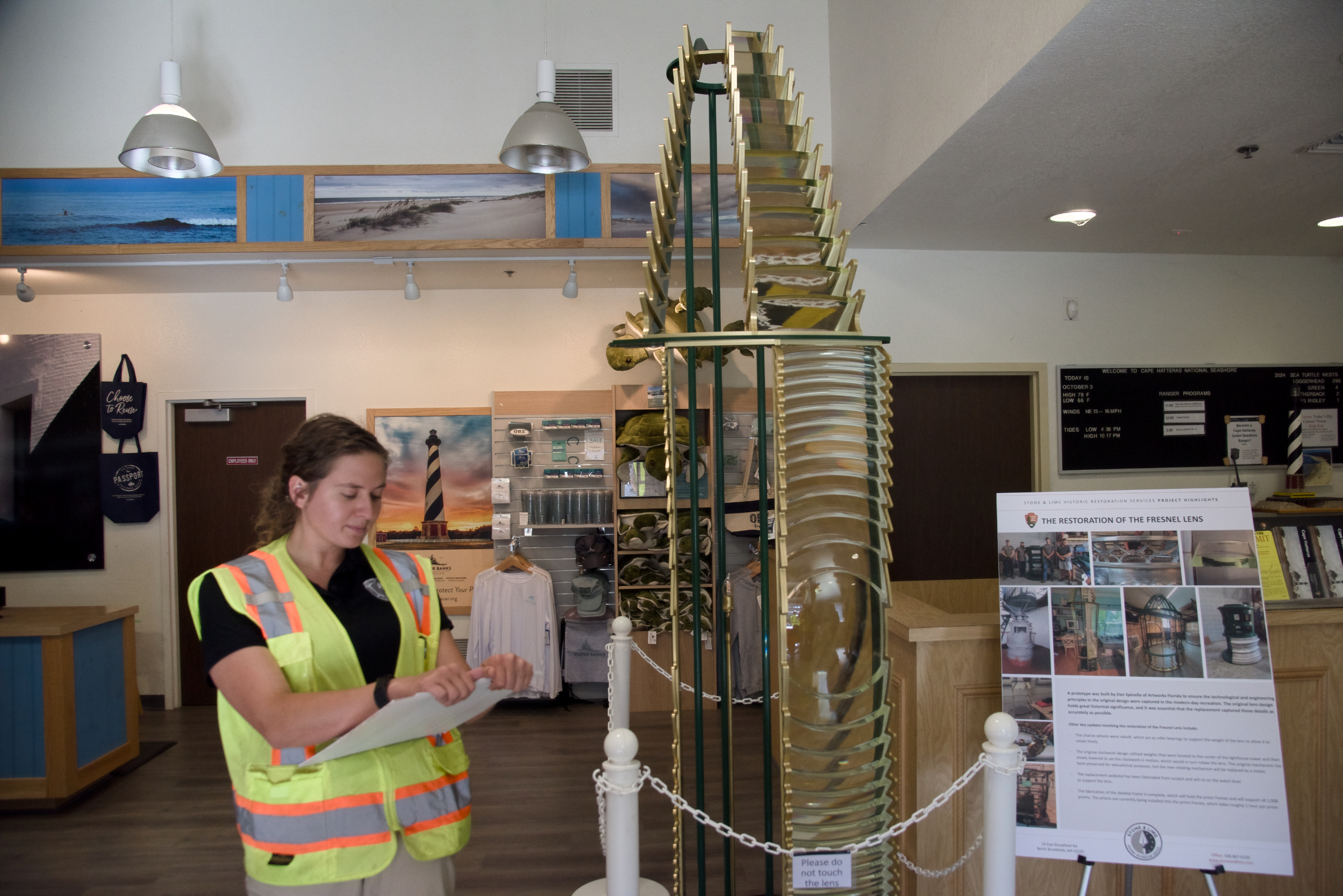Attention to Detail in Hatteras Lighthouse Restoration
The renovation of the Cape Hatteras Lighthouse still has a year and a half to go—its scheduled re-opening is the summer of 2026—but the National Park Service’s plans for a complete restoration of the iconic tower are beginning to fall into place.
Since the project began in February of this year, the classic vertical black-and-white stripes have been carefully stripped off the brick. There is still a little bit left, faded and barely seen, but what has reappeared is the original brick of the building.

The brick, which may be the most important part of the structural integrity of the lighthouse, “looks to be in pretty good condition,” Lindsey Gravel, Project Manager for Stone & Lime, told reporters at a recent tour.
Protected from the elements for over 100 and 50 years, the lighthouse’s original rich red brick color has reappeared, giving it a look remarkably similar to the Currituck Beach Lighthouse in Corolla.
The black-and-white diagonal stripes aren’t going away—the NPS and contractor Stone & Lime Masonry Restoration Services are determined to return the lighthouse to its original look as much as possible.
The research done to determine exactly what the original looked like is nothing short of amazing. Examples are everywhere.
When project historians started digging into the original specifications for where the paint would go, they found that over the years and many layers, the lines had shifted about 12 inches. Part of the restoration will put the stripes back where they were originally supposed to be.
To recreate the black and white striping, Keim Paint, which can be thought of as a mineral-based paint, will be used. The paint has a number of advantages over traditional paint. It’s breathable, which is an important consideration because trapped moisture behind the walls is a concern. It also adheres very well to the brick, so well, in fact, that workers have been struggling to remove a test stripe. A white test stripe of the Keim has been applied, and “(Workers) hard time getting that Kiem off because it does adhere so well to the brick, and that was just one coating of it,” Gravel said.

When finished, there will be two coats of Keim.
Those stripes are the lighthouse’s day marks. All lighthouses in the US used them so a mariner offshore would know where they were during the day by the appearance of the tower. Hatteras was known to have diagonal black-and-white stripes, Body Island had horizontal black-and-white stripes, and Currituck Beach was unpainted red brick.
The nighttime beacon, though, is what gives a lighthouse its name. What may be the most ambitious part of the project is that an entirely accurate replica of the original first-order Fresnel lens will be installed in the tower. The new lens will be completely functional and will be the means by which a beam is sent 20 miles or more out to sea.
Dan Spinella of Artworks Florida is doing the work. The company has replicated several Fresnel lenses in the past. The lens will be acrylic, not the glass of the original, but otherwise, what will be installed at the top of the tower will be identical to the original.
More than the lens will have the look of the original.
Cape Hatteras National Seashore Supervisor Dave Hallac told reporters even before a contract for the renovation was awarded, “We had the Coast Guard as part of our design team on this project…”
As a consequence, even though the softer, more yellowish light of the original oil lamp that would have burned in the lens is not the color the Coast Guard uses in its lighthouses today, it approved a light that will recreate the original color of the beam. It will be a halogen—no one is suggesting a return to oil lamps.
Although progress is being made on the finished Fresnel lens, it is still very much a work in progress. Like the original, each lens must be placed individually, and more than 400 have to be placed by hand. A small section that has been completed is on display at the Lighthouse Visitor Center.

The attention to historical detail is truly remarkable. Some of the bricks in the tower do have to be replaced, but to do so requires finding a brick maker who uses the same material as the bricks that originally came from a James River, Virginia kiln.
That manufacturer is St. Joe Brick Works in Louisiana. Gravel explained that North Carolina brickmakers “had shale mixed into them,” which would not have been true to the original.
There is still quite a way to go, but what is taking shape is meticulous—perhaps even astonishing—in the detail that is being paid to recreate what may be the most recognizable lighthouse in the country.
